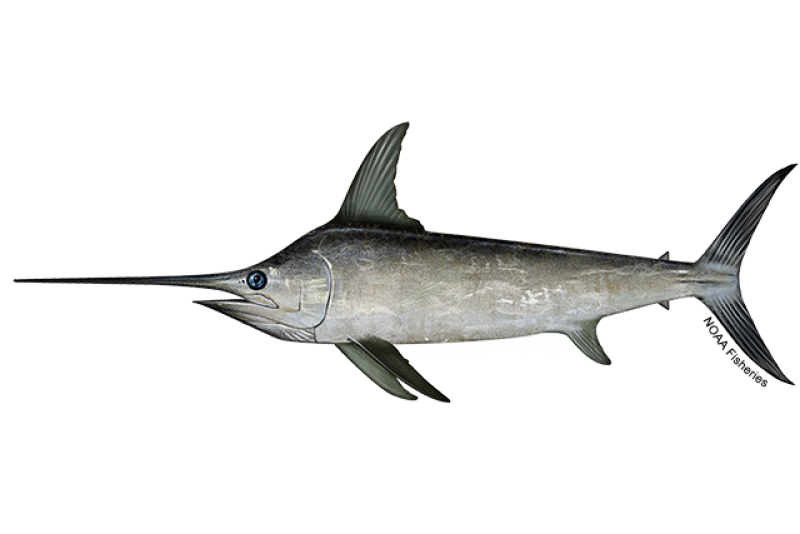Swordfish are considered one of the most prized game fish in the ocean. They are known for their strength, speed, and endurance, making them a challenging and exciting catch for anglers of all skill levels. What are Ideal Water Conditions for Swordfish?
Swordfish are particularly prized for their fighting ability, as they are known to put up a fierce battle when hooked. Anglers must use specialized gear and techniques to successfully catch a swordfish, and the fight can last for hours as the fish attempts to break free.
Introduction:
Swordfish, scientifically known as Xiphias gladius, are majestic apex predators inhabiting the world’s oceans. Renowned for their distinctive appearance characterized by a long, sword-like bill, they are among the most iconic species of marine life. Swordfish belong to the billfish family, which also includes marlins and sailfish, and they hold a significant place in both marine ecosystems and human cultures.
What are Ideal Water Conditions for Swordfish
Swordfish, with their remarkable adaptability, inhabit a wide range of oceanic environments across the globe. Their natural habitat preferences are influenced by various factors, including water temperature, salinity, depth, and prey availability. Understanding these habitat requirements is crucial for effective management and conservation efforts. Here’s an overview of the natural habitat of swordfish:
- Global Distribution:
- Swordfish are found in both tropical and temperate oceans worldwide.
- They are commonly found in the Atlantic, Pacific, and Indian Oceans, with significant populations in regions such as the Mediterranean Sea, the Gulf of Mexico, and off the coast of Japan.
- Temperature Preferences:
- Swordfish are highly adaptable to a wide range of water temperatures.
- They are often found in waters with temperatures ranging from 15°C to 28°C (59°F to 82°F), but they can tolerate both cooler and warmer temperatures for short periods.
- Depth Range:
- Swordfish are pelagic predators, inhabiting deep offshore waters.
- They are frequently found at depths ranging from 200 meters to over 1,000 meters (656 feet to 3,280 feet).
- During feeding, swordfish may venture into shallower waters, particularly during nighttime when prey species migrate to the surface.
- Salinity Tolerance:
- Swordfish are euryhaline species, meaning they can tolerate a wide range of salinities.
- They are commonly found in waters with salinity levels comparable to oceanic conditions, typically ranging from 34 to 36 parts per thousand (ppt).
- Oceanographic Features:
- Swordfish are often associated with oceanic fronts, upwellings, and thermal gradients where prey concentrations are higher.
- They may also be found near underwater structures such as seamounts, ridges, and continental shelves, which attract prey and provide suitable hunting grounds.
- Migration Patterns:
- Swordfish exhibit seasonal migrations in response to changes in water temperature, prey availability, and reproductive behavior.
- In the North Atlantic, swordfish migrate northward during the warmer months and southward during the colder months, following the movement of their preferred temperature range.
Understanding the natural habitat preferences of swordfish is essential for effective fisheries management, conservation efforts, and sustainable harvesting practices. By protecting their critical habitats and ensuring the maintenance of suitable environmental conditions, we can contribute to the long-term survival of these iconic oceanic predators.
Ideal Water Clarity for Swordfish Water
Swordfish are often found in oceanic environments with relatively clear water, although they can tolerate a range of water clarity conditions. Clear water allows swordfish to detect prey more easily and facilitates their hunting behavior. However, swordfish are highly adaptable and can also inhabit waters with lower clarity, such as those affected by sediment runoff or plankton blooms.
While water clarity may influence swordfish behavior and distribution to some extent, other factors such as temperature, salinity, and prey availability typically play a more significant role in determining their habitat preferences. Ultimately, swordfish can thrive in a variety of water clarity conditions as long as other essential environmental factors are met.


